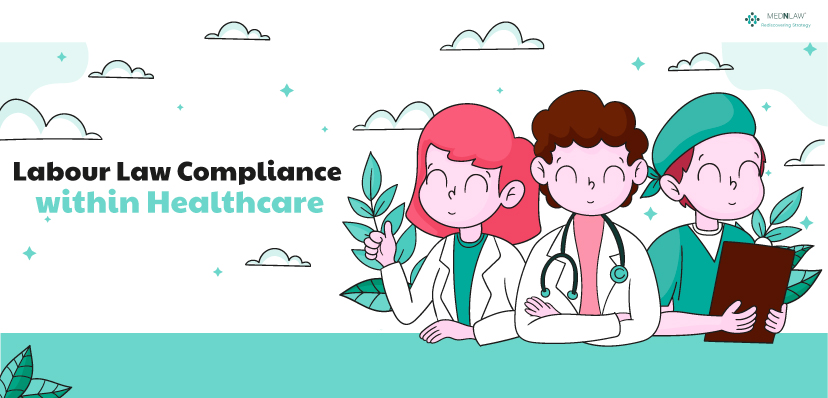
Labour law compliance is crucial for the healthcare industry. It is vital to ensure the rights and well-being of the personnel while making operations more ethical and practical.
Furthermore, without labour law compliance, there would be no protection for the workforce.
Hence, the reputation and operations of health institutions would be compromised, too. This article outlines labour law compliance in the healthcare industry, including all relevant regulations, obligations, challenges, and best practices.
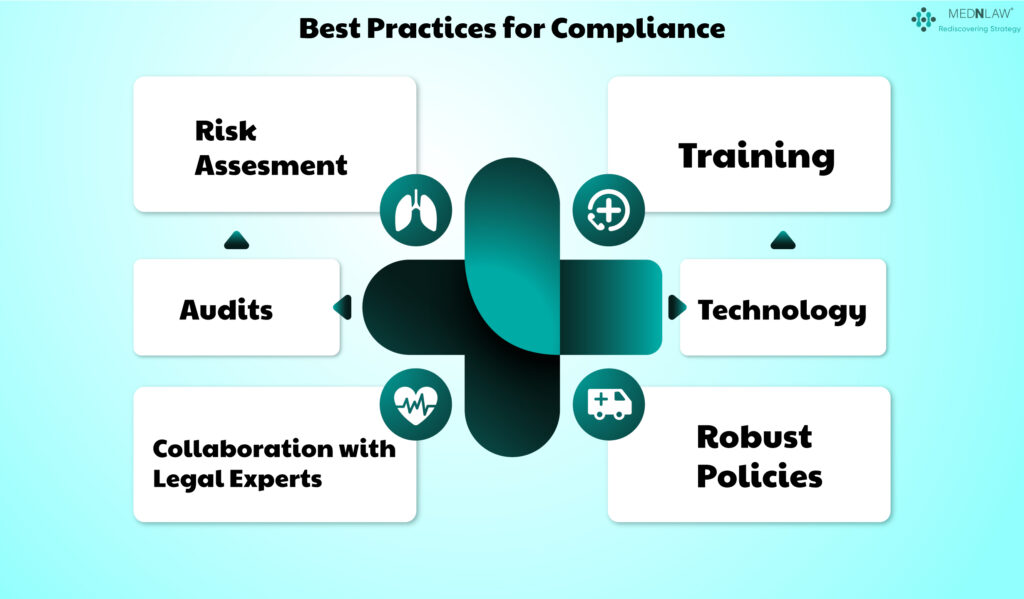
Key Labour Laws in the Healthcare Industry in India
The healthcare sector must follow a set of labour laws to ensure a compliant and ethical workplace environment. These laws include those regarding wages, working conditions, employees’ benefits, workplace safety, and dispute resolution. Some of them are mentioned below:
-
Factories Act, 1948
The Factories Act of 1948 covers all healthcare facilities. It applies to institutions operating as factories that employ ten or more workers and use power-driven machinery.
It further determines working hours, overtime, and weekly offs. It also mandates appropriate safety measures and a healthy working environment. The act also provides for welfare measures such as drinking water, restrooms, and first-aid facilities.
-
Employees’ Provident Funds and Miscellaneous Provisions Act, 1952
The Employees’ Provident Funds and Miscellaneous Provisions Act, 1952, applies to associations employing 20 or more employees. The act further requires employers to pay provident funds to employees. This ensures a comfortable future as the act secures their retirement benefits, making them financially secure.
-
Payment of Wages Act, 1936
The Payment of Wages Act of 1936 helps regulate the timely and fair payment of wages to employees below a certain wage threshold. Additionally, the act also prohibits unauthorized deductions. It also ensures payment within the stipulated time.
-
The Minimum Wages Act, 1948
The Minimum Wages Act of 1948 ensures that employees receive wages not less than the prescribed minimum rates. The act also instructs on the periodic revision of minimum wages. Further, the act protects the skilled, unskilled, and semi-skilled healthcare workers.
-
The Maternity Benefit Act, 1961
The act aims to cover maternity benefits for female employees working in establishments with 10 or more employees. The act also grants paid maternity leave up to 26 weeks. No dismissal or discrimination against a pregnant employee is allowed.
-
The Contract Labour (Regulation and Abolition) Act, 1970
The Contract Labour (Regulation and Abolition) Act of 1970 applies to an establishment with 20 or more contract workers. It further regulates contract labour law. The act also mandates contractors to provide health and welfare facilities.
-
The Equal Remuneration Act, 1976
The Equal Remuneration Act of 1976 seeks to promote gender equality in wages and employment. Furthermore, the act directs equal pay for equal work irrespective of gender. It also strictly prohibits discrimination in recruitment and employment.
-
The Industrial Disputes Act, 1947
The Industrial Disputes Act of 1947 governs dispute resolution between employers and employees. Furthermore, the act provides mechanisms for grievance redressal. It also regulates retrenchment and layoffs.
-
The Occupational Safety, Health, and Working Conditions Code, 2020
The Occupational Safety, Health, and Working Conditions Code, 2020 The act consolidates various labour laws related to health and safety. It also directs employers to provide safe and hygienic working conditions. It also mandates regular health check-ups for healthcare workers exposed to occupational hazards.
-
The Shops and Establishments Act
The Shops and Establishments Act varies by state and regulates working conditions in commercial establishments, including hospitals and clinics. The act sets rules for working hours, holidays, and overtime. It also ensures employee welfare.
Obligations of Healthcare Employers
Healthcare employers should be proactive in following labour laws and have a friendly workplace. Health employers can continue following the above in order to abide by labour laws.
-
Employment Contracts
Healthcare employers must provide employment contracts that are exhaustive in terms of job descriptions, wages, hours of work, and benefits. The employer should ensure such employment contracts will legally pass all statutory requirements.
-
Payroll Compliance
Accurate records of wages, deductions, and benefits should be kept. This also ensures that salaries and statutory contributions are paid on time.
-
Workplace Safety
Safety measures must be implemented and protective equipment issued to the employees.Health and safety training sessions should be held time-to-time.
-
Employee Welfare
Clean drinking water, toilet facilities, and medical facilities shall be provided. Rights of the employees are maternity leave, provident fund, and gratuity.
-
Grievance Redressal
Proper procedures for the redressal of grievances of the employees and expedition redressal of disputes are to be maintained.
-
Statutory Reporting
It is important to file reports and returns as required by the government authorities in time. Also, statutory notices should be put up at the workplace.
Healthcare Sector Challenges in Adhering to Labour Laws
The healthcare sector is very dynamic.Hence, the labour laws pose the following challenges for healthcare units while implementing them:
-
High Employee Turnover
The constant changes in staff create difficulties in maintaining compliance records. Moreover, the training of new employees on compliance procedures increases operational expenses.
-
Contractual Workforce
Most healthcare institutions employ contract workers, which complicates compliance with regulations such as the Contract Labour Act.
-
Diverse Workforce
The workforce includes doctors, nurses, technicians, and administrative staff, each with unique compliance requirements.
-
Lack of Awareness
Smaller healthcare establishments often lack awareness of their legal obligations. Insufficient knowledge of state-specific labour laws complicates compliance.
-
Cost Constraints
Ensuring compliance involves costs related to audits, legal consultations, and system upgrades. However, limited budgets in smaller facilities can hinder compliance efforts.
Best Practices for Compliance
Healthcare institutions may follow the best practices mentioned below to maintain labour law compliance.
-
Audits
Compliance gaps may be identified and corrected through periodic audits. Further, engaging external experts for comprehensive assessments may be undertaken.
-
Training
Training of employees on issues of workplace safety, harassment prevention, and compliance policies. In addition, such training programs must reflect changes in labour laws.
-
Technology
Use payroll and compliance management software to streamline processes. Maintaining digital records for easy access and monitoring.
-
Robust Policies
Develop clear HR policies aligned with labour laws. Ensure policies address employee grievances, harassment, and disciplinary actions.
-
Collaboration with Legal Experts
Partnering with legal professionals to stay updated on labour law amendments. Additionally, seeking legal advice to handle complex compliance issues.
Consequences of Non-Compliance
Consequences of Non-compliance with Labour Laws: There are several impacts that healthcare institutions face for failure to comply with labour laws. Some are mentioned here:
- Consequences in Terms of Law – Non-compliance may attract fines, imprisonments, or both. Further, repeated offenses may attract suspension of the license.
- Reputation Suffered – Adverse publicity related to labour law disputes can erode patient confidence. Such dissatisfaction of employees may affect the quality of service.
- Operational Disruptions – Non-compliance investigations disrupt day-to-day operations. Strikes and protests by employees affect patient care.
- Financial Losses – Legal fines and lawyer charges drain money and resources. Furthermore, employee loss due to poor compliance practices increases recruitment costs.
Judicial Precedents
Indian courts highlighted the essence of labour law compliance in several judgments. Some of them are mentioned below:
People’s Union for Democratic Rights v. Union of India (1982)
The case highlighted the requirement for fair wages. Further, it also directed the employers to provide humane work conditions.
- Krishnamurthy v. State of Karnataka (2005)-The case highlighted the urgency of on-time wage and benefit payments.
- Punjab v. Jagjit Singh (2016)-This case respectfully reiterated the doctrine of equal pay for equal work.
Conclusion
Labour law compliance in healthcare is important to ensure the rights of employees and adherence to best practices. Even though legal protection is stringent, high turnover rates, different workforce needs, and cost concerns require proactive actions.
Healthcare institutions can successfully navigate legal obligations by adopting best practices, leveraging technology, and fostering a culture of compliance. Compliance is important because it minimizes legal risks, increases employee satisfaction, enhances the reputation of an organization, and improves the quality of service offered.
-
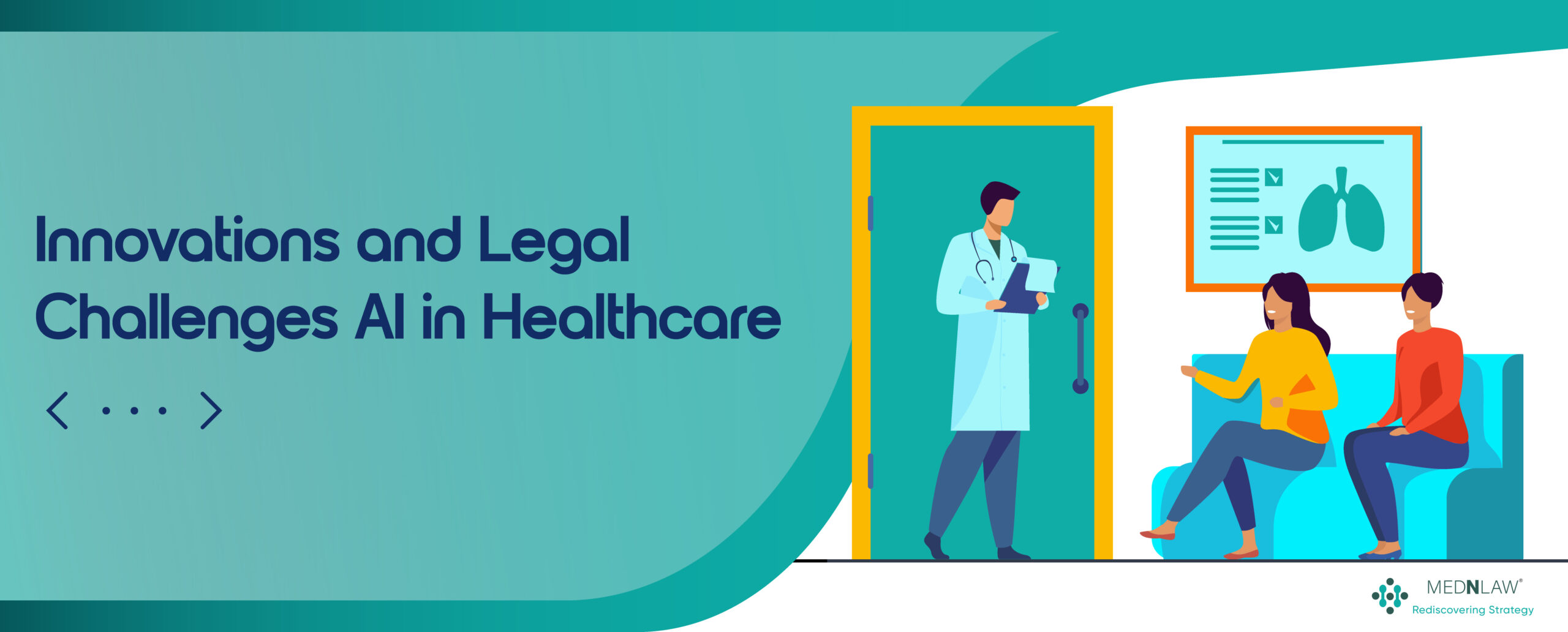
-
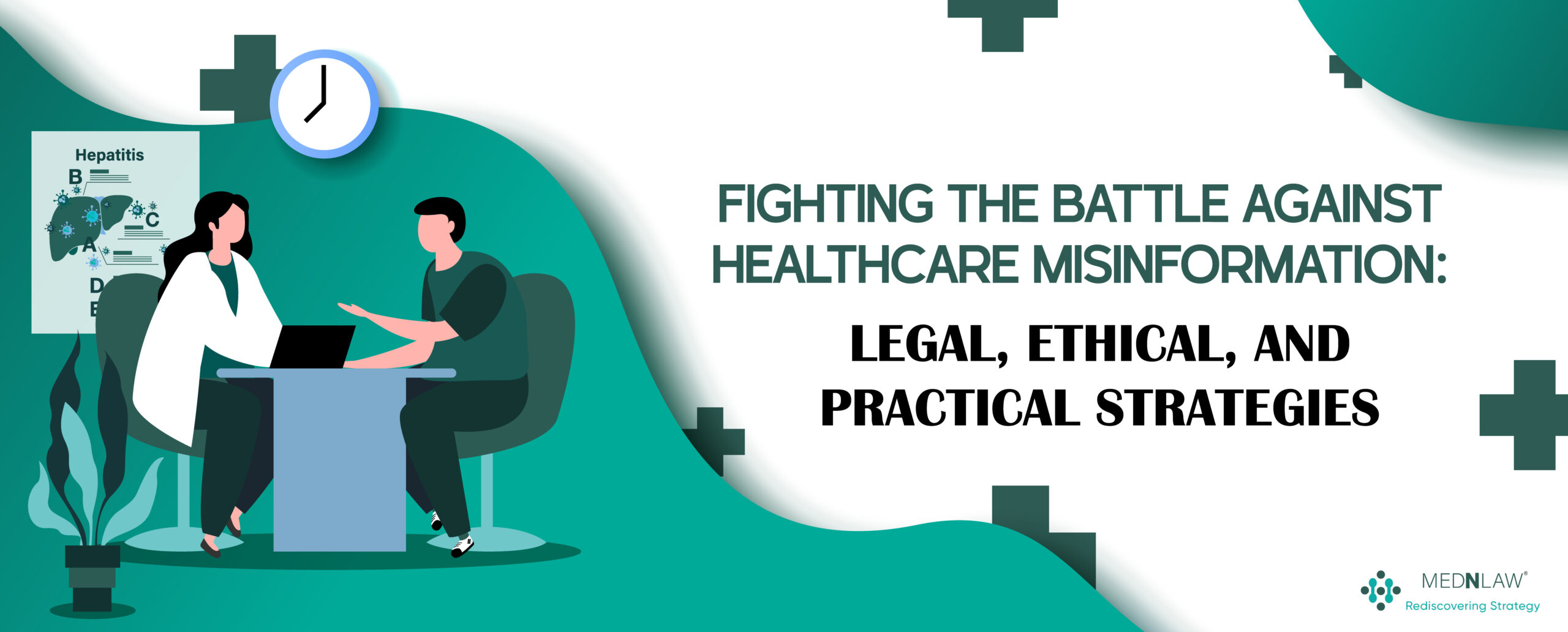 Fighting the Battle Against Healthcare Misinformation: Legal, Ethical, and Practical Strategies4:43 am GMT+00:00•February 21, 2025Read more
Fighting the Battle Against Healthcare Misinformation: Legal, Ethical, and Practical Strategies4:43 am GMT+00:00•February 21, 2025Read more -

Here are some related articles you may find interesting
-

-
 Fighting the Battle Against Healthcare Misinformation: Legal, Ethical, and Practical Strategies4:43 am GMT+00:00•February 21, 2025Read more
Fighting the Battle Against Healthcare Misinformation: Legal, Ethical, and Practical Strategies4:43 am GMT+00:00•February 21, 2025Read more -

-

-

-
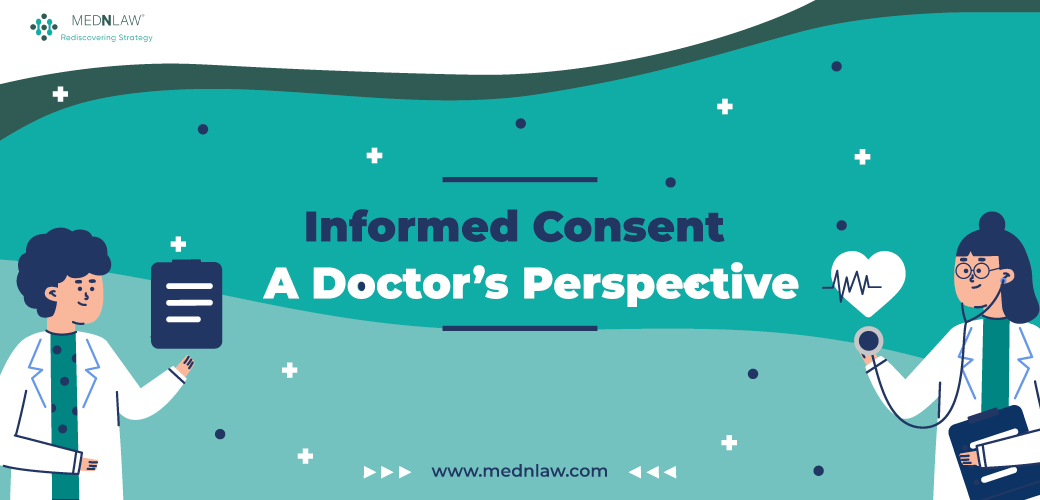
Copyright Mednlaw



